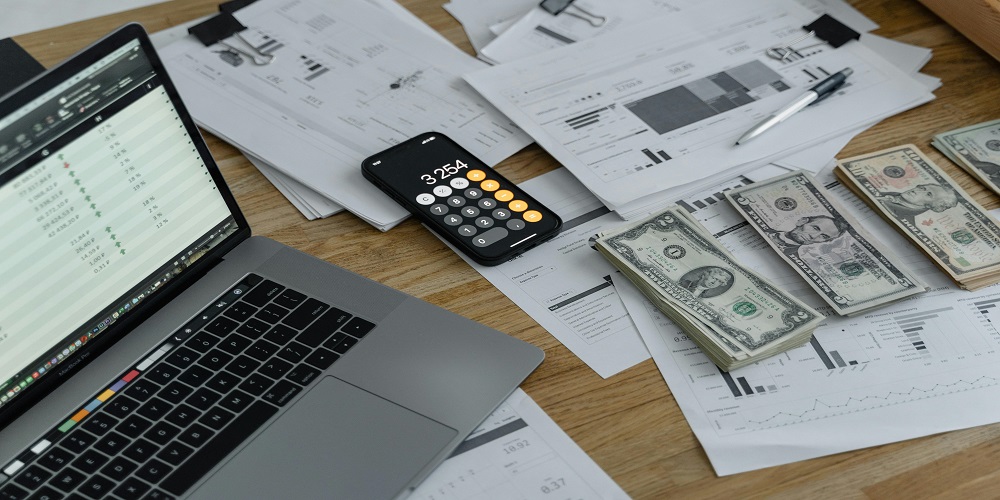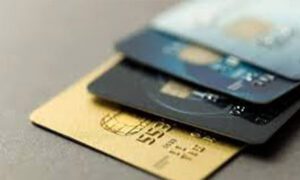Finding effective ways to manage your finances has never been more crucial. Enter financial planning apps—the pocket-sized powerhouses designed to help you not only track your spending but also supercharge your savings. Whether you’re a budgeting newbie or a seasoned pro looking for the latest tools, these innovative platforms have something special to offer everyone. From customizable savings goals to cutting-edge investment advice, we’re diving into the very best features of today’s leading financial planning apps that can turn even the most chaotic budget into a streamlined path toward prosperity. Get ready to take charge of your finances and unlock the potential for significant savings—your future self will thank you.
Financial Planning Apps and the importance of managing money smarter
In today’s fast-paced world, managing your finances can feel like a daunting task. With bills piling up and expenses constantly creeping in, it’s easy to lose track of where your money goes each month. Enter financial planning apps—your digital allies in the battle for better budgeting and smarter savings. These innovative tools are designed to simplify your financial life, allowing you to monitor spending habits, set goals, and ultimately take control of your fiscal future.
Imagine having all your financial data at your fingertips: tracking investments, budget allocations, and even saving for that dream vacation—all from the comfort of an app on your phone or tablet. The importance of mastering money management is more critical than ever; with the right financial planning app by your side, turning chaos into clarity has never been easier. Whether you’re looking to save a little or a lot, these tech-savvy solutions can help pave the way toward a healthier wallet and peace of mind.
How do Financial Planning Apps work?
Financial planning apps operate by linking to your bank accounts and credit cards, allowing them to track your income and expenses in real-time. This connection gives you an immediate snapshot of your financial health.
Once linked, these apps categorize transactions automatically. You can see where your money goes—groceries, entertainment, bills—and identify spending patterns that may surprise you.
Many applications offer budgeting tools as well. You set limits for various categories and receive alerts when you’re close to exceeding them.
Some platforms also provide goal-setting features. Whether it’s saving for a vacation or paying off debt, they help keep you on track with visual progress indicators.
Advanced options include investment tracking and retirement planning tools that analyze long-term financial strategies based on current data inputs.
Comparison: Top Financial Planning Apps (Mint, YNAB, Personal Capital)
Mint is a powerhouse in the financial planning app space. Its user-friendly interface allows you to track expenses, create budgets, and monitor your credit score. The ability to sync with bank accounts makes it easy to see all your finances in one place.
YNAB (You Need A Budget) takes a different approach. It emphasizes proactive budgeting by assigning every dollar a job. This method encourages users to plan for future expenses rather than just tracking past spending.
Personal Capital stands out with its investment tracking features. Users can not only budget but also manage retirement goals and analyze their portfolios seamlessly. Its robust tools help visualize overall financial health at a glance.
Each app brings unique strengths, catering to various financial habits and needs of the modern consumer. Whether prioritizing budgeting or investing, there’s something for everyone among these top players.
– Key Features and Benefits
Financial planning apps offer a variety of features designed to simplify budgeting and enhance savings. One standout feature is automated expense tracking, which categorizes spending in real time. This helps users visualize where their money goes.
Another key benefit is goal setting. Apps allow you to create specific financial goals, whether saving for a vacation or paying off debt. These targets keep you motivated and focused.
Many apps provide personalized insights through analytics. By analyzing your spending habits, they can suggest tailored strategies to maximize savings potential.
Integration with bank accounts adds convenience. Users can sync multiple accounts for an all-in-one view of their finances, simplifying management tasks significantly.
Notifications are also essential; reminders about bills or budget limits help prevent overspending and ensure timely payments without stress.
– Pricing and Availability
Pricing for financial planning apps varies widely based on features and services offered. Many popular options, like Mint, are free to use, funded through advertisements and partnerships. This makes them accessible for users looking to manage their money without upfront costs.
On the other hand, YNAB (You Need A Budget) operates on a subscription model with a monthly fee after a free trial period. Users appreciate the structured approach to budgeting that it provides.
Personal Capital offers a blend of free tools for budgeting and investment tracking but charges fees for its wealth management services. This tiered structure allows users to choose how deeply they want to engage with their finances.
Availability is generally high across platforms—most apps can be accessed via iOS or Android devices and web browsers. Downloading an app is often just a click away from major app stores.
– Customer Reviews
Customer reviews can provide valuable insights into the effectiveness of financial planning apps. Users often share their experiences, highlighting what features they love and areas that could be improved.
For instance, Mint users frequently praise its user-friendly interface and budgeting tools. They enjoy tracking spending habits effortlessly while setting savings goals. However, some have noted occasional glitches or ads that might disrupt the experience.
On the other hand, YNAB users appreciate its proactive approach to budgeting. Many testimonials speak about transforming their financial lives by adopting a zero-based budgeting method. Some find it challenging at first but emphasize how rewarding it becomes with consistent use.
Personal Capital reviewers often mention its investment tracking capabilities as a standout feature. They value having a comprehensive view of assets in one place but occasionally express concerns over customer service response times.
These varied perspectives help potential users make informed decisions when choosing the right app for managing their finances effectively.
Tips on how to choose the best Financial Planning App for your needs
Choosing the right financial planning app can be overwhelming. Begin by identifying your specific needs. Are you looking for budgeting tools, investment tracking, or expense categorization? Understanding what you want will narrow down your options.
Next, consider user-friendliness. An intuitive interface makes managing finances easier and less stressful. Test a few apps to see which one feels most comfortable.
Don’t forget about compatibility with your devices. Ensure the app works seamlessly across smartphones and computers if you switch between them frequently.
Also, check security features. Your financial data should always be protected with encryption and secure access methods.
Finally, read customer reviews carefully to gauge real-world usability and support response times. Real experiences often highlight strengths or weaknesses that listings may overlook.
Best Practices for using Financial Planning Apps effectively
To maximize the benefits of financial planning apps, start by setting clear goals. Knowing what you want to achieve makes it easier to track your progress.
Regularly update your financial data. The more accurate and current your information is, the better insights you’ll receive regarding your spending habits and areas for improvement.
Take advantage of all features offered by the app. Whether it’s budgeting tools, investment tracking, or bill reminders, explore everything available to enhance your experience.
Engage with any educational resources provided within the app. Many platforms offer articles and tutorials that can deepen your understanding of personal finance.
Finally, set aside time each week to review your finances through the app. Consistent check-ins help ensure you stay on course while adjusting strategies as needed for fluctuating circumstances.
Additional resources for financial planning and budgeting
For those looking to deepen their understanding of financial planning, numerous resources are available. Online courses from platforms like Coursera and Udemy offer structured learning on budgeting and investing. Many of these courses cater to different skill levels.
Podcasts provide another engaging way to absorb financial wisdom while multitasking. Shows such as “The Dave Ramsey Show” or “BiggerPockets Money” discuss real-life scenarios and effective strategies for managing money.
Books, too, can be a treasure trove of information. Titles like “The Total Money Makeover” by Dave Ramsey or “Your Money or Your Life” by Vicki Robin offer timeless advice on building wealth and achieving financial independence.
Lastly, local community workshops often host free seminars led by financial experts. These events can be invaluable for networking and learning directly from professionals in the field.
Overall impact of using a Financial Planning App on personal finances
Using financial planning apps can significantly transform how individuals manage their money. These tools empower users to track their spending, create budgets, and set savings goals with ease. By leveraging technology, they provide insights that were once only available through professional financial advice.
The benefits often extend beyond mere tracking; many apps are designed to educate users about personal finance. As people become more aware of their habits and patterns, they’re better equipped to make informed decisions regarding investments and savings strategies.
Real-life success stories illustrate the impact these apps have had on people’s lives. From paying off debt faster to building substantial emergency funds, the potential is vast. Users report feeling more in control and confident in managing their finances.
With a variety of options available, finding the right app tailored to individual needs is essential for maximizing effectiveness. Whether it’s setting budget alerts or visualizing progress towards financial goals, these features enhance user experience.
Conclusion
In today’s fast-paced and ever-changing world, it is important to stay on top of your finances. With the help of financial planning apps, we have access to a variety of tools and features that can make managing our money easier than ever before. From budget tracking and expense categorization to automated savings plans and investment opportunities, these apps offer a wealth of benefits for maximizing your savings. So don’t wait any longer, download one of these leading financial planning apps today and take control of your finances.



































